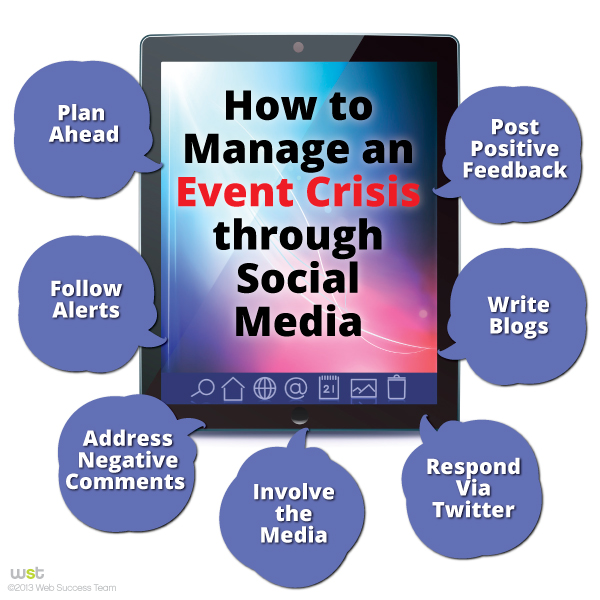01
Oct 2013
How to Manage an Event Crisis through Social Media
I previously attended a very high profile event with star bloggers and social media marketers. Sadly things did not go as planned – there was not enough food, not enough product samples. It was disorganized and dissatisfied bloggers and press left early. In less than 24 hours the guests displeasure was splashed all over the Internet. The brand was slammed by the very people who were invited to promote it. The company chose not to respond to the crisis and remained silent.
Though we sometimes we can’t avoid a branding disaster, there are a few steps we can take to save the day and the product. In this article we are going to outline some suggestions that will help you avert an online viral disaster.
How Do We Avoid DISASTER?
Most big brands have a Social Media Marketing program in place. Online reputation and brand management should be an essential part of this equation. It should not be an “as well as” or let’s react if (or rather when it happens) but a “part of” the strategy. An exit strategy for online disaster should be ready to launch the minute negative press goes out.
1. Plan Ahead: When planning your event, campaign etc…also think of all the things that could go wrong and have a plan to address them should x, y or z happen.
2. Follow Alerts: Google, Social Mention, Cision, or anything else you can think of to monitor what “they are saying.” Just so you know.
3. Use Facebook, Google+ or LinkedIn: The day of the bad press you should address negatives with wall posts. No need to apologize for mistakes made, just sympathize with the individual in question and post your rebuttal focusing on the positive.
4. Involve the Media: Get to the press and have them help you with a rebuttal, perhaps an interview with the CEO that can be circulated via YouTube or a PR channel.
5. Use Twitter: Reach out to irritated parties and address their concerns. Also search your event hashtag to monitor negative conversations and address them with a tangible solution.
6. Write Blogs: Blog away addressing all negative concerns and CIRCULATE IT everywhere! Facebook, LinkedIn, Twitter, Groups, Communities etc….
7. Post Positives: Publish positive press from the event and add positive attendee comments to reinforce the message that it was a few dissatisfied people out of a vast majority of great feedback — and how the event was a success.
In the Final Analysis
Fear not, transparency is key here and on the Internet. Brands are not immune to negative press. All you need to do is be proactive and take control. Think of President Clinton. He did survive smelling like a rose.
To continue the discussion follow us on Facebook, Twitter or Google+.












